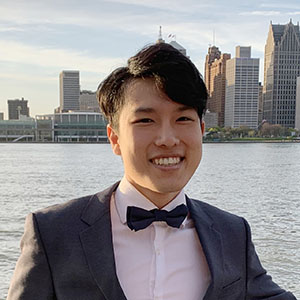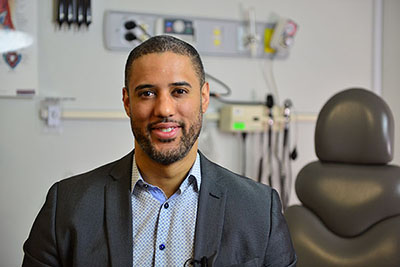Feature: Not all head and neck cancers are the same

By Crystal Mackay, MA’05
When medical student Hugh Kim first dove into analyzing the more than 500 mouth and throat cancer samples in a massive database of molecular and genetic information, he was looking to shed light on an often-overlooked cancer.
Unlike breast, cervical or prostate cancer, these types of cancers are often overlooked in research. His goal was to better understand the molecular makeup of these cancers, and whether there were differences depending on where they are located in the mouth and throat.
 “The reason why we thought this would be interesting to investigate is because in clinical practice, these cancers are managed differently with either surgery or radiation as the primary treatment modality depending on specifically where they are located,” said Kim, Medicine Class of 2022. “We wanted to look at the genetic information at each of the locations to see if there were differences between these cancers that would make them respond more favourably to surgery or radiation or different types of immunotherapy.”
“The reason why we thought this would be interesting to investigate is because in clinical practice, these cancers are managed differently with either surgery or radiation as the primary treatment modality depending on specifically where they are located,” said Kim, Medicine Class of 2022. “We wanted to look at the genetic information at each of the locations to see if there were differences between these cancers that would make them respond more favourably to surgery or radiation or different types of immunotherapy.”
They found that each cancer is actually very different and unique in terms of its molecular and genetic makeup depending on where it is located. “It has really conclusively determined in my mind that there really are distinct differences between these and there is probably a biological rationale for why these treatment paradigms have developed other than just what's easy to surgically access,” said Dr. Anthony Nichols. “We don’t yet know why. It could be something about the environment there, the anatomy, or perhaps lymph node drainage.”
Their results were published in the journal Oral Oncology.
Kim started working on this research project after his first year of medical school as part of the Schulich Research Opportunities Program under the supervision of Nichols, a clinician-scientist in the Department of Otolaryngology – Head and Neck Surgery. Excited by the initial results, Kim says the experience ignited an interest in both clinical research and otolaryngology, and he’s continued on with the research project on his own time out of personal interest.
Under Nichols’ direction, Kim began to decode and analyze the molecular and genetic material from the Cancer Genome Atlas, a massive repository of information characterizing over 60,000 samples from a variety of cancer types including 500 cancers of the head and neck.
 “The Cancer Genome Atlas is a mountain of data and although people have done this first pass analysis, there are all sorts of hidden research treasures in there to be found,” said Nichols. “Hugh has been the finder of some of these treasures. He has figured out how to mine this information and to use some pretty sophisticated programming and careful analysis to analyze and integrate the information.”
“The Cancer Genome Atlas is a mountain of data and although people have done this first pass analysis, there are all sorts of hidden research treasures in there to be found,” said Nichols. “Hugh has been the finder of some of these treasures. He has figured out how to mine this information and to use some pretty sophisticated programming and careful analysis to analyze and integrate the information.”
Kim and Nichols decided not to include cancers caused by the Human Papilloma Virus (HPV) in their analysis because the vast majority of these are from the oropharynx, and there were not enough samples in outer areas for comparison.
For non-HPV-related cancers of the head and neck, however, oncologists decide how to treat them based on where they are located – a cancer on the tip of the tongue is treated differently than one on the soft palate or back of the throat. These decisions are made based on factors like proximity to the voice box and how surgery versus radiation might affect talking or swallowing.
“You can have the same-sized tumour in two different locations on the tongue. On the front of the tongue, we treat that with surgery and remove it; but once it’s on the back of the tongue, we would treat that with radiation,” said Nichols. “I wondered for years if the decisions guiding our treatment strategies were too simple, and if the genes and proteins are also different between a voice box cancer versus a tongue cancer versus a tonsil cancer.”
Next the team hopes to understand how this genetic information can be used to inform treatment options, and whether there are genetic and molecular differences depending on gender or race that would also change the way cancers of this kind are treated.









